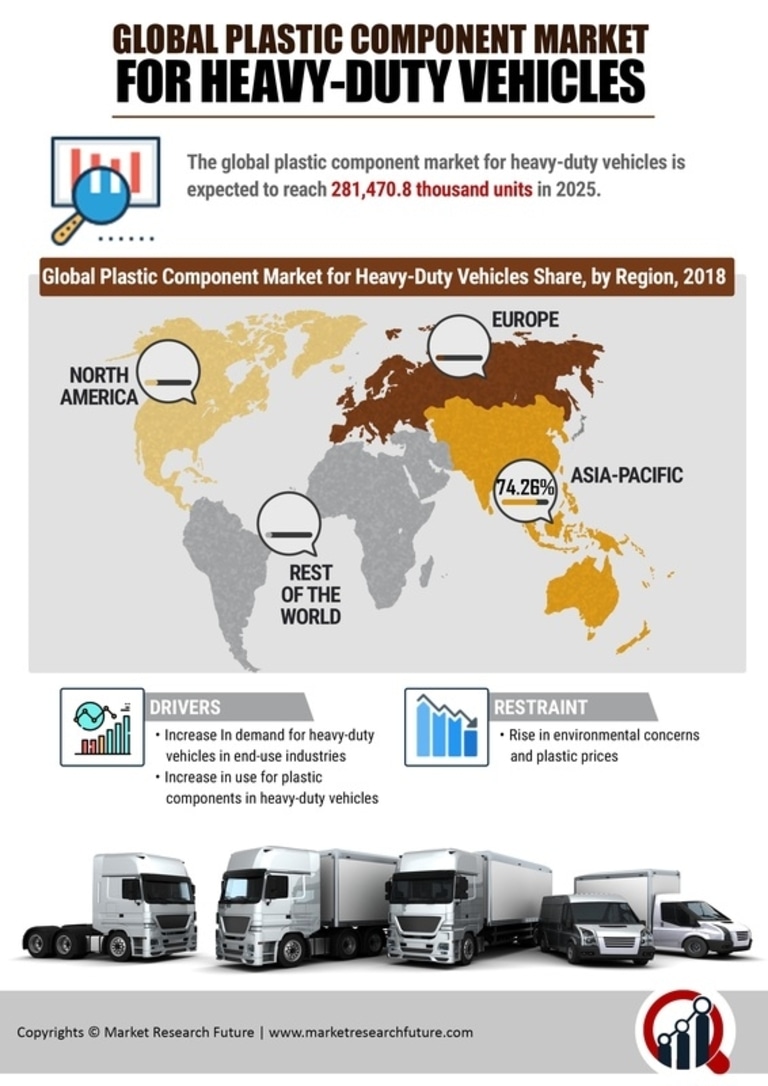Healthcare Sector Innovations
The healthcare sector is increasingly relying on plastic components for a variety of applications, which is positively impacting the Plastic Component Market. In 2025, it is estimated that the healthcare industry will contribute around 15% to the overall plastic component market. This growth is driven by the need for medical devices, packaging, and laboratory equipment that require high-performance plastic materials. Innovations in biocompatible plastics and sterilization techniques are enabling the development of advanced medical products that meet stringent regulatory standards. Furthermore, the ongoing emphasis on improving patient care and safety is likely to propel the demand for plastic components in healthcare applications, thereby fostering growth within the Plastic Component Market.
Growth in Consumer Electronics
The consumer electronics sector is witnessing a robust expansion, which is significantly impacting the Plastic Component Market. With the proliferation of smart devices, including smartphones, tablets, and wearables, the demand for plastic components is on the rise. In 2025, the consumer electronics segment is projected to represent around 25% of the overall plastic component market. This growth is attributed to the need for lightweight, durable, and aesthetically pleasing materials that can enhance product functionality and design. Furthermore, advancements in manufacturing processes, such as injection molding and 3D printing, are enabling the production of intricate plastic components that meet the evolving demands of consumers. As a result, the Plastic Component Market is likely to benefit from the ongoing innovations and increasing consumer preferences for high-tech electronic devices.
Rising Demand in Automotive Sector
The automotive sector is experiencing a notable surge in demand for lightweight and durable materials, which positions the Plastic Component Market favorably. As manufacturers strive to enhance fuel efficiency and reduce emissions, the use of plastic components in vehicles is becoming increasingly prevalent. In 2025, it is estimated that the automotive industry will account for approximately 30% of the total plastic component consumption. This trend is driven by the need for innovative designs and the integration of advanced technologies, such as electric vehicles, which often utilize plastic components for battery housings and interior fittings. Consequently, the growth in the automotive sector is likely to propel the Plastic Component Market forward, fostering opportunities for manufacturers to innovate and expand their product offerings.
Expansion of Packaging Applications
The packaging industry is undergoing a transformation, with a marked shift towards sustainable and efficient solutions, thereby influencing the Plastic Component Market. In 2025, it is anticipated that the packaging sector will account for approximately 40% of the total demand for plastic components. This growth is driven by the increasing need for lightweight packaging materials that can reduce shipping costs and enhance product shelf life. Additionally, the rise of e-commerce has further accelerated the demand for innovative packaging solutions that ensure product safety during transit. As companies seek to adopt eco-friendly practices, the Plastic Component Market is likely to see a surge in demand for biodegradable and recyclable plastic materials, aligning with global sustainability goals.
Infrastructure Development Initiatives
Infrastructure development initiatives are gaining momentum, which is expected to have a substantial impact on the Plastic Component Market. As governments and private entities invest in building and upgrading infrastructure, the demand for plastic components in construction and civil engineering applications is likely to rise. In 2025, it is projected that the construction sector will account for approximately 20% of the total plastic component consumption. This growth is driven by the need for durable, lightweight, and cost-effective materials that can withstand various environmental conditions. Additionally, the integration of smart technologies in infrastructure projects is creating opportunities for innovative plastic components that enhance functionality and sustainability. Consequently, the Plastic Component Market is poised to benefit from these infrastructure development trends.


















Leave a Comment